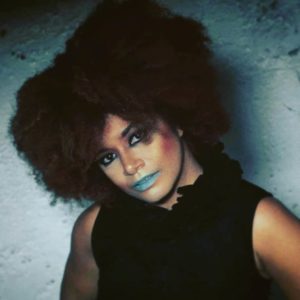Free White & 21
AAGang
The Dozens
doz·en
ˈdəzən/
noun
plural noun: the dozens
Urban dictionary
- 1.
a group or set of twelve.
"a dozen bottles of sherry"- 2.
an exchange of insults engaged in as a game or ritual among black Americans.
dozens
Playing the dozens is an African American custom in which two competitors -- usually males -- go head to head in a competition of comedic trash talk. They take turns "cracking on," or insulting, one another, their adversary's mother or other family member until one of them has no comeback. In the U.S., the practice can be traced back to chattel slavery, when violence among slaves was a property crime with potentially draconian consequences. Verbal sparring became a substitute for physical contention. While the competition on its face is usually light-hearted, smiles sometimes mask real tensions.
The dozens can be a harmless game, or, if tempers flare, a prelude to physical violence. But in its purest form, the dozens is part of an African-American custom of verbal sparring, of "woofin'" (see wolf ticket) and "signifyin'," intended to defuse conflict amicably, descended from an oral tradition rooted in traditional West African cultures. The dozens is a contest of personal power -- of wit, self-control, verbal ability, mental agility and mental toughness. Defeat can be humiliating; but a skilled contender, win or lose, may gain respect.
"Yo' mama," a common, widely recognized argumentative rejoinder in African-Amercan vernacular speech, is a cryptic reference to the dozens.
The term "the dozens" refers to the devaluing on the auctionblock of slaves who were past their prime, who were aged or who, after years of back-breaking toil, no longer were capable of hard labor. These enslaved human beings often were sold by the dozen.
The Dozens - Wikipedia
It is also known as "blazing", "hiking", "roasting", "capping", "clowning", "ranking", "ragging", "rekking", "crumming", "sounding", "checkin", "joning", "woofing", "wolfing", "sigging", or "signifying",[1][2] while the insults themselves are known as "snaps".[3][4]
A variety of explanations have been offered for the popularity of the Dozens. Its development is intertwined with the oppression African Americans encountered, first as slaves and later as second class citizens. John Dollard viewed the Dozens as a manifestation of frustration aggression theory, a theory that he helped develop. He hypothesized that African Americans, as victims of racism, have been unable to respond in kind towards their oppressors, and instead shifted their anger to friends and neighbors, as displayed in the strings of insults.[12]
In 1962, folklorist Roger Abrahams explained the Dozens not only as a reaction to racism, but also as a mostly male behavior in a society dominated by women, hence the concentration on targeting opponents' mothers. Abrahams believed the Dozens to be exaggeratedly masculine behavior that is unable to be expressed except in short bursts where a participant attacks his opponent's mother in order to cause him to reply in kind and attack his own mother.[2]
Both Dollard's and Abraham's views have been criticized for not properly considering the context in which the Dozens is used. Folklorist Alan Dundes asserts that by basing their approach on psychoanalytic theory, neither Dollard nor Abrahams considers that the Dozens may be native to Africa, although Dollard does not rule it out. Dundes points out that, in addition to similar forms of verbal combat found in Nigeria and Ghana, where many African Americans have ancestral roots, Bantu and Kisii boys have been observed dueling verbally by attacking each other's mothers.[13]
The game is also viewed as a tool for preparing young African Americans to cope with verbal abuse without becoming enraged. The ability to remain composed during the Dozens is considered a hallmark of virtue among many African Americans. Two sociologists write, "In the deepest sense, the essence of the dozens lies not in the insults but in the response of the victim. To take umbrage is to be considered an infantile response. Maturity and sophistication bring the capability to suffer the vile talk with aplomb at least, and, hopefully, with grace and wit."[1]
Nonetheless, many such contests do end in fights. Roger Abrahams states that when African Americans reach a certain age, between 16 and 26, the game loses much of its appeal and attempts to enter into sparring contests often result in violence.[2] John Leland writes that the loser of the Dozens is the one who takes his opponent's words at face value, therefore ending his own performance in the back-and-forth exchange.[8]
Great post











 4 Gold & 1 Bronze
4 Gold & 1 Bronze



























